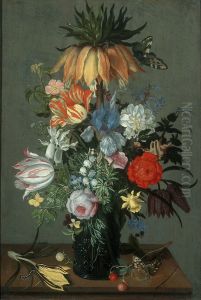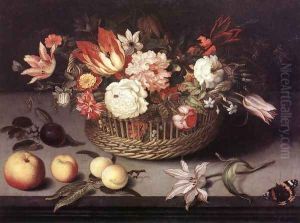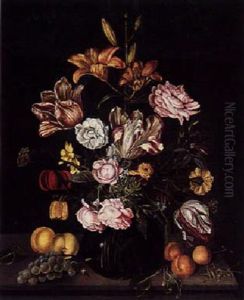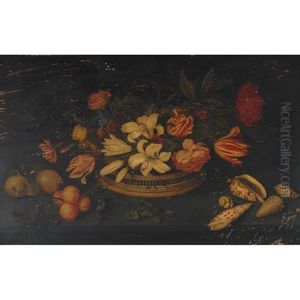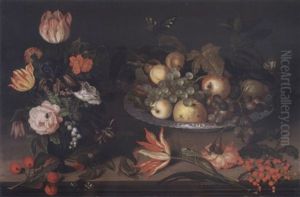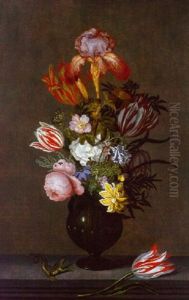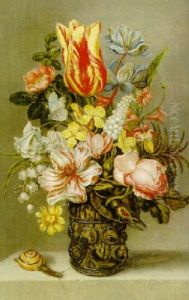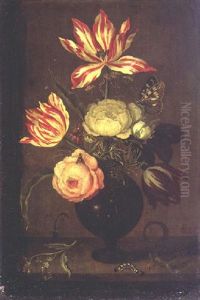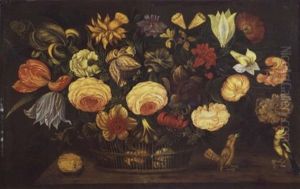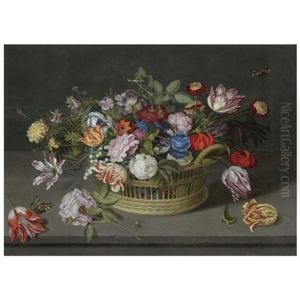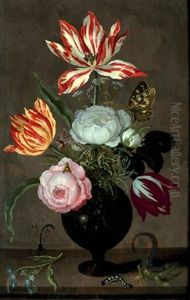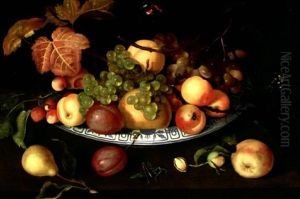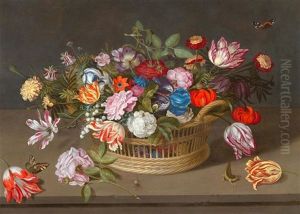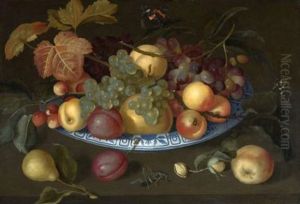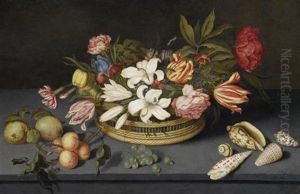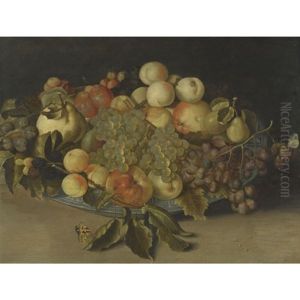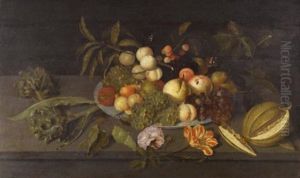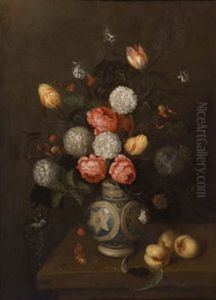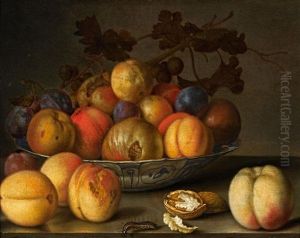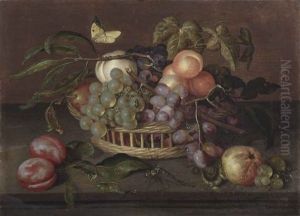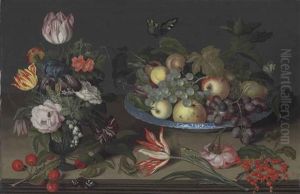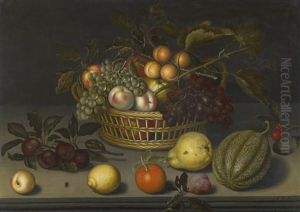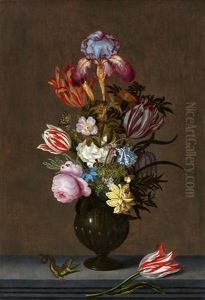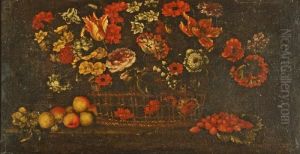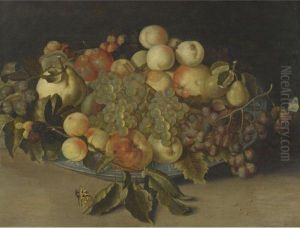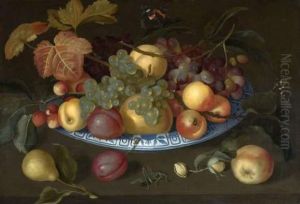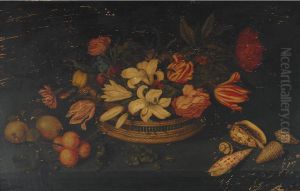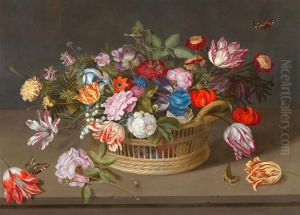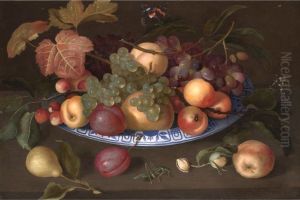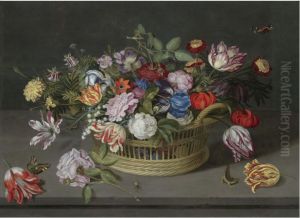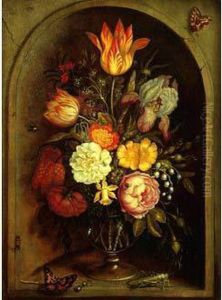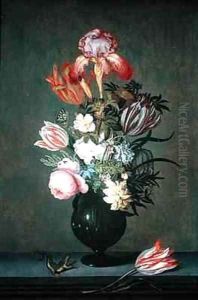Johannes Bosschaert Paintings
Johannes Bosschaert was a member of a Dutch family of still-life painters. He was born around 1606-1607 in the Dutch city of Middelburg into an artistic family; his father, Ambrosius Bosschaert the Elder, was a prominent still-life painter, and his brothers Ambrosius the Younger and Abraham were also painters. Johannes's work is often characterized by its vibrant colors, detailed portrayal of flowers, and the inclusion of insects and other small creatures, which was typical for the still-life genre in the Netherlands during the early 17th century.
Johannes Bosschaert's career was short-lived since he died young, in 1628 or 1629, likely in the Dutch city of Dordrecht. Despite his early death, his work had a significant impact on the development of the floral still-life genre in Dutch Golden Age painting. His compositions often included an array of flowers arranged in a vase, with great attention to the individual characteristics of each flower. He was known for his ability to create a sense of depth and texture, making his floral arrangements appear lively and realistic.
Bosschaert's paintings were highly sought after during his lifetime and were collected by wealthy patrons and art lovers. He contributed to the Bosschaert dynasty's reputation, which continued to influence still-life painters in the Netherlands and beyond. His works can be found in various museums and art collections, serving as a testament to his skill and the enduring appeal of still-life painting during the Dutch Golden Age. His legacy is also reflected in the works of his family members and the subsequent generations of still-life artists who were inspired by the Bosschaert style.
